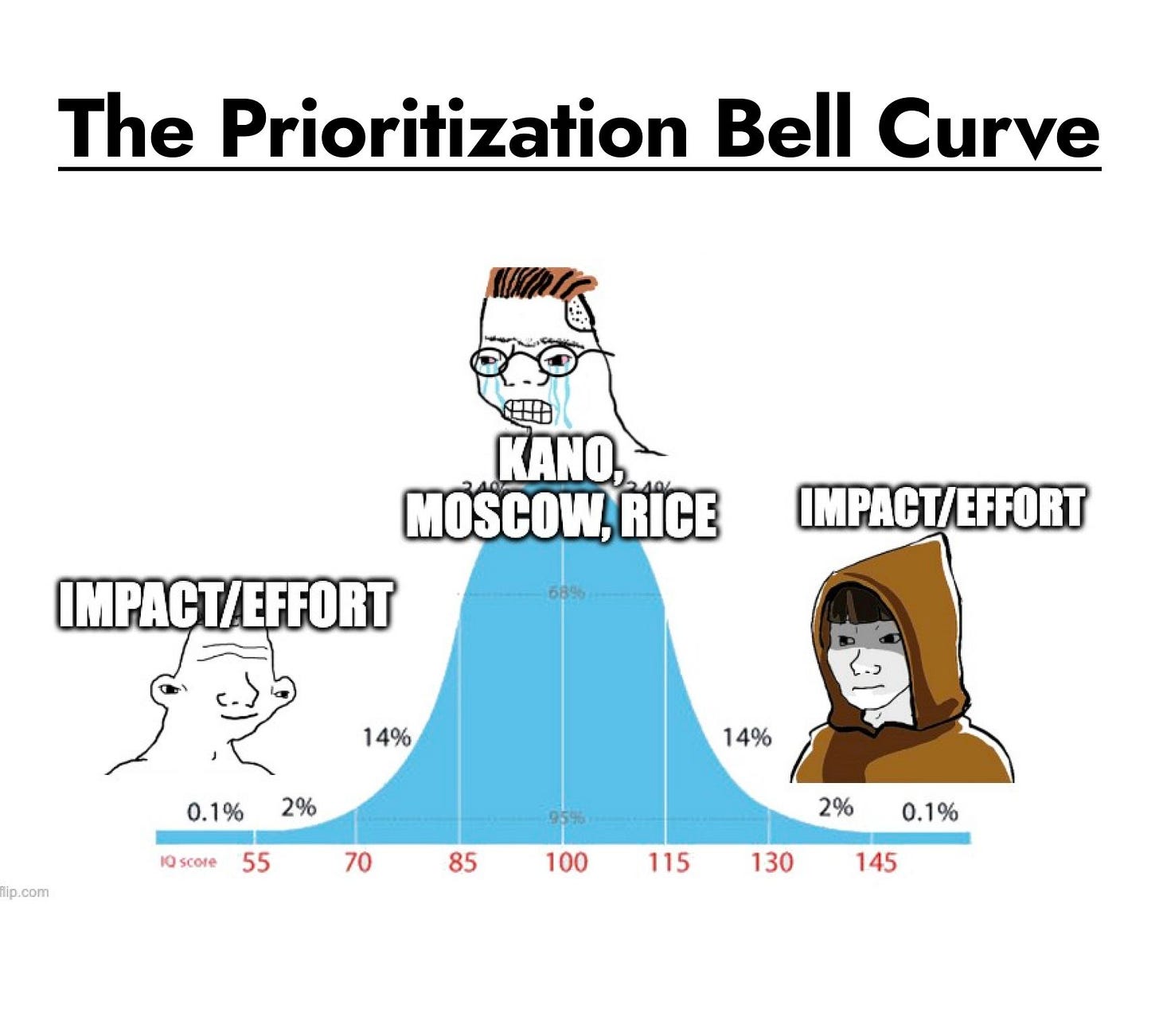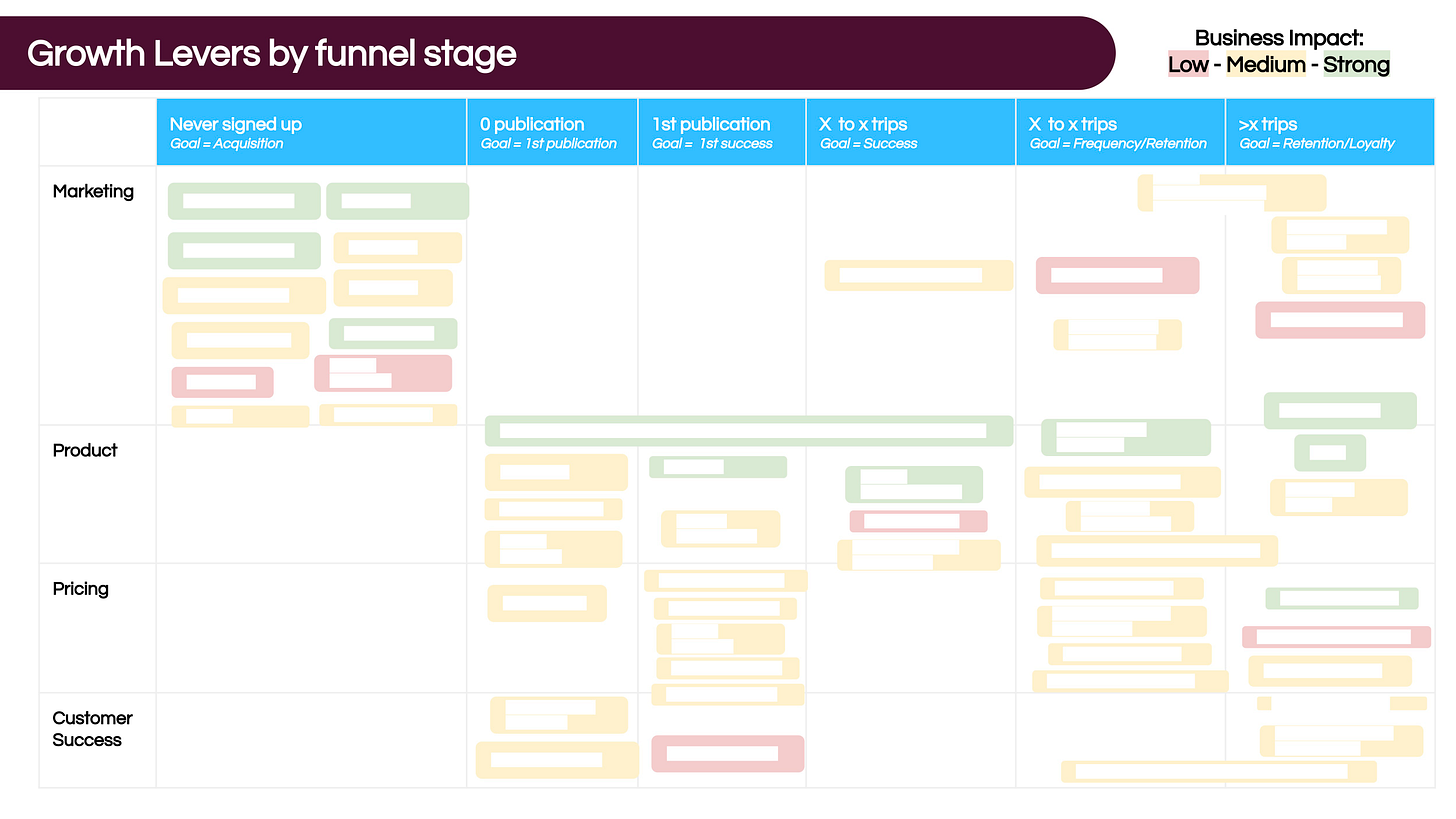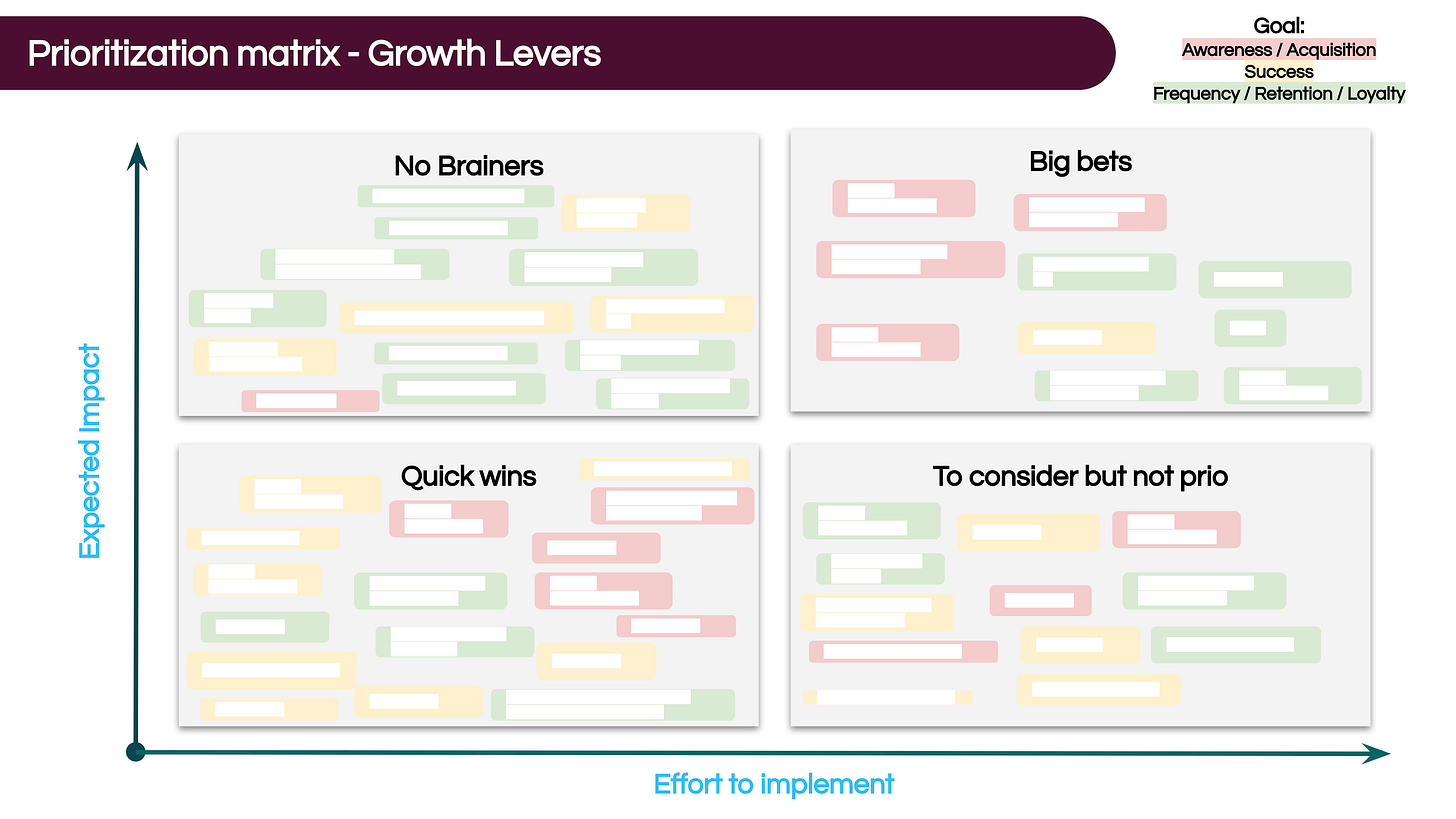📈 How to prioritize Growth Levers?
With the framework I used at BlaBlaCar
Hey Growth folks 👋 Welcome to this new edition of The Growth Mind!
In today’s edition:
🤯 The Pitfalls of Traditional Prioritization Frameworks
🛠️ The Growth Framework I used at BlaBlaCar for our 2024 strategy
Reading time = 4 minutes
This edition is brought to you by TLDR Newsletter
Love tech news but don’t have the time to read them every day? Try TLDR’s daily newsletter, read by 1,250,000 tech workers.
TLDR covers the best tech and startup news in a quick email that takes 5 minutes to read.
🤯 The Pitfalls of Traditional Prioritization Frameworks
I recently found this visual about prioritization frameworks in Product Management. And I can say I’m fully aligned with it.

While the visual is oriented toward product frameworks, it can apply to purely growth-oriented prioritization frameworks too.
Up to a few months ago, I was a big fan of the two main traditional frameworks in growth: ICE and PIE.
ICE = Impact + Confidence + Ease
PIE = Potential + Confidence + Ease
For each framework, you attribute to each criterion a rating, from 0 to 5 or 10, and then prioritize the growth tactics having the higher score. Sounds fairly easy right?
But those frameworks have in my opinion some problems:
Too much focus on quick wins: The ease criteria make you focus mainly on things that are easy to implement and avoid working on larger projects, which are necessary in many cases. Some people pondered the ease criteria weight, but still, I found it had complexity (at least at a global prioritization level).
Discard real big bets: Bets are generally uncertain. You can have big beliefs that something will work (generally based on a mix of experience, customer knowledge and data) but have a low to medium confidence in their success. But bets are part of the game. I’m of course not saying you should go all-in on things you have 0 confidence in just because they can be impactful. But it can make you discard your next moonshots.
The more criteria you have, the harder is it to align internally: In an ideal world, you have data to back all your hypotheses and you’re able to precisely estimate the impact, ease and confidence you have in a tactic. But in the real world, that’s rarely the case. Especially for new tactics, which by design are hard to evaluate due to no past data. Then, having a lot of criteria can lead to infinite debates between your team, with a high probability of making a mistake on the rating of criteria as they are always unknown.
I personally experienced all those negative effects. That’s why I decided to push for a much simpler framework this year, which worked pretty well.
🛠️ The Framework I used at BlaBlaCar for our 2024 Growth strategy
My team at BlaBlaCar is responsible for performances of the long-distance Carpool activity in Western Europe.
Early this year, we started to work on the main growth levers we wanted to activate to stimulate our supply (carpool drivers).
And the process we used was quite straightforward (even if it implies a lot of preliminary work to gather ideas, look at data, and understand your main business dynamics and opportunities).
We divided the prioritization process into 2 steps 👇
1# Brainstorming and preliminary ranking of growth levers
First, we mapped the main steps of our drivers’ lifecycle (the first row below). We applied a simple goal to each of those steps (acquisition, success, frequency…).
Then, we brainstormed ideas within the team and discussed them with other teams to get an exhaustive vision of the levers and projects we could work on.
Those ideas were then added to a stream (marketing, product, pricing, customer success). Each stream contributes to several steps of the user journey.
Finally, we estimated a business impact (low - medium - strong) for each idea. If we have data/historical performances, estimating the impact is rather easy. But sometimes, the business impact is based on gut feelings (fed by surveys, discussions with users, other teams, etc.) and that’s fine.
Once we have this table, it’s time to start prioritizing.
2# Classify our ideas in a simple Impact/Effort matrix for Prioritization
When we started discussing prioritization, I proposed to my team to use a matrix with only two dimensions: Business Impact and Effort to Implement.
To better visualize our ideas, we added a 3rd dimension: the goal, symbolized by the colors of each box.
We built 4 big boxes to classify our growth levers:
☄️ Big Bets: The projects with the most impact, but that take time. Those are necessary for growth and we know we need to invest resources on them.
⚡️ No Brainers: Projects with a medium to high impact, that does not necessitate too much effort.
🏎️ Quick Wins: The low-hanging fruits, easy to implement, but with a fairly limited impact.
❌ To consider but not prio: Those ideas are discarded yet, but we keep them in the backlog.
Once we finished our matrix, we detailed each idea into a complete memo, shared it with the main stakeholders, and conducted some internal workshops to align who was working on what.
This matrix worked pretty well because it’s a simple Cost/Benefits ratio, which is easily understandable for everyone in the company. We used it as a basis to conduct our workshops and write a more compelling memo.
Of course, some debates happened, but that’s the goal of the exercise. And at the end of the process, we were able to share our list of Growth levers for 2024, with a particular focus on our big bets.
The conclusion? Keep it simple and don’t chase complexity ✌️





